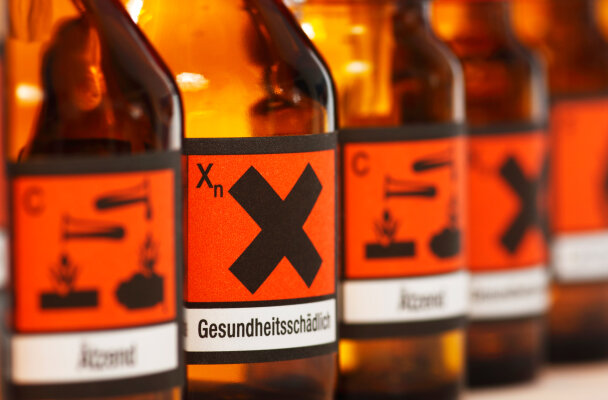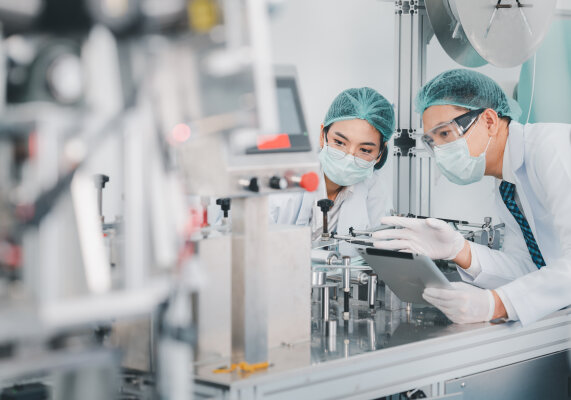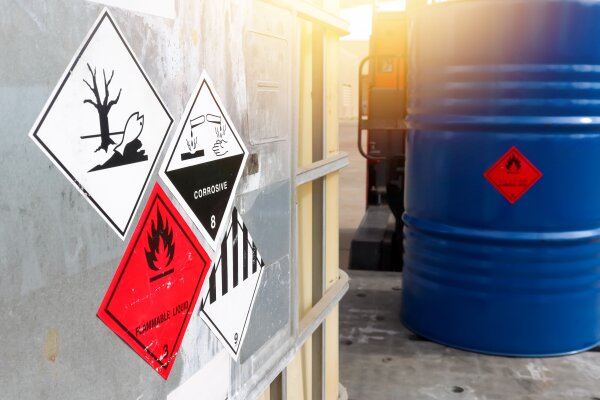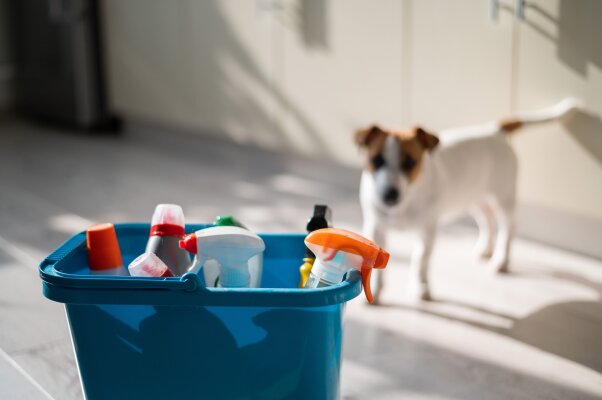pH measurement done right in the lab: what you need to know
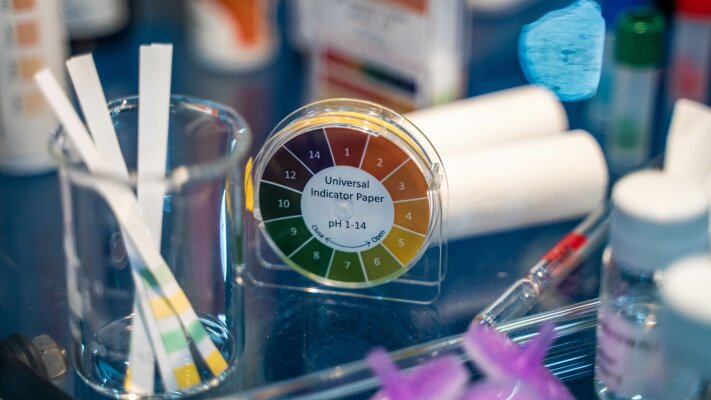
In the laboratory, it is often necessary to determine the pH of a measured sample – from food to liquids to wastewater, acids and blood. A pH measuring instrument that works according to the potentiometric measuring method is usually used. For reliable measurement results, not only the correct calibration and execution of the measurement, but also the selection of the appropriate electrodes, membrane and electrolytes are elementary.
We have summarized a quick guide with all the important information on pH measurement for you here.
When is a pH measurement performed?
The term pH measurement refers to the determination of the acidic or basic properties of a test sample. This value depends on the concentration of hydrogen ions, which are determined with the help of a potential difference to the reference electrode of the measuring instrument. Therefore, the function of the pH meter is similar to that of a voltmeter.
Measured values of 7 are considered neutral. The more acidic it becomes, the more the value shifts towards 0. Alkaline or basic values range up to 14. Determining the pH value may be necessary for various reasons. In this way, properties of the test sample can be derived that influence the quality or allow conclusions to be drawn about chemical reactions. Therefore, pH measurements are carried out, for example, in food production, in medicine and research, in swimming pools or in environmental testing.
Carry out pH measurement correctly
Although pH measurements can also be made using color-changing test strips, these only provide an approximate value. In the laboratory, therefore,electrochemical methods are used in most cases, in which a pH meter is used. This produces a reliable and readable value. This requires regular calibration of the pH meter, which is performed as follows:
- Adjusting the temperature: Make sure that the buffer solution and the instrument are at the same temperature, which can be adjusted with an automatic temperature compensator.
- Checking the electrode: Check the electrode for damage and replace it if necessary.
- Preparatory measures: Store a new electrode in a cup of storage liquid for approximately four hours to prepare it.
- Instrument setting: Then set the pH meter to ATC (Automatic Temperature Compensation) or “pH”, depending on the instrument.
- Initial Immersion: Determine the baseline voltage by immersing the electrode in a fresh buffer solution with a pH of 7.0 and setting the reading to this pH.
- Single point calibration: Rinse the electrode with demineralized water to complete the single point calibration.
- Second immersion: For two-point calibration, the pH electrode must then be immersed in a buffer solution with a pH of 4.0 or 10.0 and the reading value on the instrument must be set again accordingly.
- Two-point calibration: Finally, the electrode is rinsed once more and the two-point calibration is completed.
Selection of the electrode according to sample properties
Not every sample is the same – different electrodes must be used depending on the type of substance for which the pH value is to be determined. Proper selection plays a significant role in producing a reliable reading, so special attention should be paid to this electrical connection. Mostly diaphragms are used, which differ from each other in permeability and material:
Ceramic diaphragm
For clear aqueous media (such as swimming pool water), a ceramic diaphragm is usually used, consisting of a porous ceramic pin about 1 millimeter thick. The combination electrode or the reference electrode is fused into the pin and allows only a small outflow at the electrolyte. This can result in the disadvantage of impurities sticking to it.
Plastic diaphragm
If, on the other hand, the mediaare heavily contaminated, such as wastewater containing paint or liquids with a sulfide content, robust plastic diaphragms are used – thanks to the smooth surface, contamination can hardly adhere. The pH value is mostly determined in combination with KCL gel.
Teflon ring diaphragm
A special form of plastic diaphragms are Teflon ring diaphragms, which are provided with an additional Teflon coating. This makes it possible to use it even in heavily contaminated media (such as waste water and even grease as well as oil) because the Teflon forms a self-cleaning surface. This is laid out in a ring shape.
Slit diaphragm
Since pH is determined as a power, low-electrolyte or weakly buffered solutions present a challenge for many pH electrodes. In such cases, special slit diaphragms are used in which the electrolyte can penetrate the ground core via a hole between the ground surfaces. The rough surfaces of the frosted glass joint create the contact between the measuring solution and the reference electrolyte. The best-known representative of this group is the ground-glass junction diaphragm.
Open diaphragm
If direct contact between the sample and the electrode is necessary, so-called open diaphragms are used. They are used for gel and solid electrolytes as well as for variants with an absent or low electrolyte leakage, which is why they are mainly used for measurements in dairy products and foodstuffs.
PTFE diaphragm
Diaphragms made of PTFE (polytetrafluoroethylene) benefit from a minimized risk of clogging, making these pH electrodes particularly suitable for liquids with dissolved solids. These include mainly wine and must, which makes the electrodes are used mainly in the food industry.
Fabric diaphragm
Diaphragms made of fabric are used for outdoor measurements, for example, when the pH value of wastewater or rainwater is to be determined. The ionic conductivity is improved by this type of construction, and at the same time the risk of contamination can be significantly minimized.
Lochdiaphragma (offene Verbindung)
An open connection is created by a perforated diaphragm so that there is direct contact between the electrolyte solution and the measurement sample. Therefore, this electrode comes especially for gel or solid electrolytedemand and is often found in the production of food. The large contact area is less susceptible to contamination.
Membrane glasses: different shapes and types
Most pH meters are models with a glass membrane where the electrical potential can be determined by a half-cell reaction – this is a quick and easy way to determine pH. The glass used is special membrane glass, which is available in various shapes. This enables the ideal adaptation of the membrane glass to the application. In particular, the following variants are distinguished:
Spherical membrane
The most commonly used are spherical membranes, which are the medium of choice for liquids and aqueous solutions. The round shape makes it possible to keep the electrical resistance low.
Cylinder diaphragm
Diaphragms in the form of cylinders or hemispheres (so-calleddome diaphragms) are mechanically somewhat more robust, so that they are easy to clean and can also be used for corrosive measurement samples. These variants are also designed for liquid substances.
Cone diaphragm
For pastes and semi-liquid materials, on the other hand, conical diaphragms are used. The special shape provides more compressive strength, which is combined with high robustness and ease of cleaning.
Needle or puncture membrane
Needle or puncture membranes are glass bodies that are inserted directly into the medium. They have a pointed shape and are rather delicate. The potential range of application extends to semi-solid media such as fruit and meat.
Flat membrane
pH measurements on surfaces are made possible with a flat membrane that does not have to be inserted into the medium – contact is sufficient for the measurement. They are mainly used for skin or paper.
Selecting the correct electrolyte solution for pH measurement
Inside the pH meter there is a reference wire on which the voltage difference between the reference electrode and the measuring sample can be derived. This reference electrolyte is immersed in an electrolyte solution, which is also not always the same – it should be adapted to the requirements of the test sample. In principle, three electrolyte solutions can be distinguished here:
Liquid electrolyte
Liquid electrolytes are used for refillable electrodes, which in most cases are based on KCL (potassium chloride)or KCL+Ag/AgCl (potassium chloride + silver-silver chloride). This offers the advantage that the used liquid can be refilled or a contaminated electrolyte can be replaced. At the same time, cleaning and maintenance are facilitated, which makes this variant user-friendly.
Gel electrolyte
Gel electrolytes also require little maintenance and have an additional low contamination level. At the same time, they are more pressure-resistant, which is why they are often used for industrial measurements or outdoor applications. In contrast to solid electrolytes, they are simpler in construction and cheaper to purchase, which is why they are also suitable for individual measurements.
Solid electrolyte
Instead of a conductive liquid, solid electrolytes use polymers that are firmly anchored inside the pH meter. This creates the disadvantage that the electrode is not refillable. However, these electrolytes are particularly pressure-resistant and durable. They are mainly found in industrial applications.
Cleaning the electrode
To avoid inaccurate readings and falsified results, the electrodes of the pH meters must be cleaned regularly. Depending on the type of contamination and the structure of the electrode, various cleaning processes are used:
Silver sulfide clogging
If sulfides or silver sulfide (Ag2S) clog the electrode, an alkaline surfactant and polyphosphorus solution should be used. Alternatively, thiourea solutions or hydrochloric acid may be used. Rinse the electrode for about 5 to 30 minutes.clogging by silver chloride
AgCl clogging is best solved by soaking the electrode in a concentrated ammonia solution. Corresponding contamination is mostly caused by a reaction of silver ions of the reference electrolyte with samples containing chloride.
Protein constipation
Protein impurities can be treated with a solution of 0.5% pepsin in 0.1 mol per liter of hydrochloric acid. For this purpose, the electrode should be soaked in the solution for several hours.
Other blockages of the diaphragm
For other blockages, ultrasonic baths and HCl solutions are particularly suitable. In our guide to cleaning electrodes, we have listed many other types of contamination and cleaning approaches.
Store the electrode correctly after the pH measurement
Not only cleaning, but also proper storage contributes to a long service life and accurate readings of the pH meter. Therefore, the electrode should be placed in tap water – never in distilled water– or directly in a storage solution for storage. For long-term storage over several weeks or months, dry storage may also be possible.
FAQ
The pH measurement of an electric pH meter is based on the electrochemical determination of the potential generated by means of a half-cell reaction between the reference electrodein the instrument and the sample to be measured. Therefore, the pH measurement works in direct dependence on the H+ ion concentration in the measurement sample.
When measuring the pH value, make sure that thepH meter has been calibrated correctly and that a suitable electrode is used. This must be matched to the measurement sample. The same applies to the shape of the glass membrane. In addition, the choice consists of different electrolytes, which must also fit the measurement.
To calibrate the pH meter, first adjust the temperature, store the electrode in a storage liquidfor four hours, and check the electrode before setting the instrument to ATC. It is then immersed in a pH 7 solution and rinsed before being immersed in a pH 0 or 10 solution and rinsed again.
The measurement of the pH value may also be necessary for different reasons. This mostly determines whether the value is in the optimal range or needs to be increased or decreased. This can occur, for example, in quality controlin the food sector, in medicine and research, in swimming pools or in environmental testing.
Do you have questions about the topic or would you like to suggest a topic? Please contact us by phone at +49 30 2096579 00 or send us an email at info@medsolut.com.

